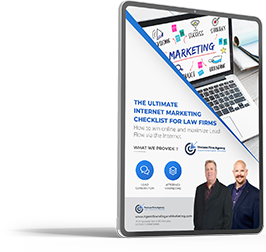
Social media has become an integral part of marketing. According to a 2015 Shareaholic report, organic search has been surpassed as the number source for website referral traffic; social media now holds the top spot. In other words, your future clients are on the likes of Facebook, Twitter, LinkedIn, Google Plus and YouTube.
But social media marketing requires a somewhat different approach to what most marketers are accustomed. These are not places to simply broadcast your sales messages. In fact, being overly salesy will do your brand more harm than good in this medium.
That is not to say you can’t ply your services on social media. According to Social Media Examiner, a whopping 96% of small business owners use social media marketing, which is at least some indication that there are rewards to be had. All signs suggest that, if done correctly, marketing on social media can have a tremendous impact on your business. It is a fine art, but one that is worth mastering.
What is Social Media Marketing
Traditional marketing, like print advertising, radio, and TV, all have one thing in common; they’re designed to broadcast a marketing message to a large audience. This communication channel inherently flows one-way – from company to consumer.
The clue as to how social media differs from traditional forms of marketing is in the title; you need to focus more on the social element rather than the marketing aspect. Instead of simply broadcasting your marketing messages to any and everyone, you are forced to find targeted audiences and build relationships.
Social media typically involves sharing content, images, and videos. That content helps to trigger consumer engagement and interaction, which is crucial for marketing success these days. The most successful brands understand the types of content that resonate with their audience. They share a mixture of their own content, third party content, and marketing messages. In fact, a good rule to follow comes from Wyzowl.com. It’s called the 5-3-2 rule and states the following:
- 5: Should be content from others that is relevant to your audience.
- 3: Should be content from you that is relevant to your audience but not sales focused.
- 2: Should be personal, fun content that helps humanize your brand.

Start Small, Think Big
Social media is a vast sphere of marketing opportunities. Three of the most well-known social media platforms – Facebook, Twitter, and LinkedIn, have almost 2 billion active users combined. That represents mouthwatering prospects from a marketing standpoint. But, while it is important to think big, you need to set reasonable expectations. You can quickly become overwhelmed if you don’t.
Despite the astounding number of active users on social media, it is unreasonable for you to expect, for example, 500 new Facebook followers in a week. Focus on publishing valuable content on fewer platforms and your audience will eventually grow.
Starting small means not jumping on every available social media platform at the outset. Identify the main one or two where your prospects spend the most time and invest your resources there. By building a small base of loyal fans on key platforms, you can place your brand in a stronger position to expand to other social channels.
Pick Your Target Audience
The phrase “If you market to everyone, you market to no one” is so common that can almost be considered cliché. But, it is true. It is a common mistake among new business owners who feel an innate discomfort when faced with the idea of limiting their audience. That unwillingness to narrow the target audience might be grounded in traditional marketing practices.
Things like television advertising, radio, and print are designed to speak to a broad audience. Now the advice is to market to a smaller audience, and to many agents that may feel unnatural. But, the truth is, designing your marketing around a small subset within a wider market will usually yield bigger results than a generalized marketing campaign.
That is especially true on social media platforms where people are drawn to causes, groups, and brands that they feel they can relate. By making your agency appealing to a small group of people, you will find that your agency starts to attract prospects that are more likely to become clients. As opposed to a big audience of mostly disinterested people who will probably never buy from you.
Engage and Resonate
The goal of your social media marketing plan should be to nurture and grow a community, not lay on the hard sell for your services. Your aim is to engage creatively with your audience and facilitate a two-way conversation. Use social platforms to interact with your prospects and build relationships.
Take the opportunity to show off your insurance expertise, but combine that with content that reflects yours and your agency’s personality. It is the latter that people will find most endearing. It is the aspect of the brand that is most resonative and will lead to natural engagement.
To boost engagement rates, you can do things like ending your posts with a thought-provoking question, run a promotion, or donate a dollar to charity for every new follower you receive. Of course, Google and the other search engines are smart enough now to understand, and reward, websites that have high “engagement rates” as it relates to social media–they’re called, “Social Signals.” Those websites that have high social media engagement rates, all things considered equal, will move up the SERPs (Search Engine Results Pages) at a faster pace.

Be Consistent and Persistent
You need to have a sound social media strategy. That includes not posting content “willy-nilly,” being thoughtful with your topics, and remaining consistent and persistent. It means getting into a habit and sticking to it. Social Media Examiner found that ninety-one percent of marketers who consistently execute on a social media strategy for a year experience a boost in brand exposure.
Brand exposure means you are top of mind for a group of people, which means a higher likelihood of referral business. The key is to pick a schedule – whether that be once per day on one social platform, or multiple times across various platforms – and stick to it.
Be Quick
People like a constant supply of fresh content. It is what keeps them coming back to a brand’s social media page. One effective way to make sure that you stay top of your prospects minds is to establish yourself as the go-to source for industry news. Social media presents a great opportunity for you to react quickly and disseminate information.
When legislative changes affecting your industry are announced, for example, you should be the first to jump on it. Share relevant articles from reputable news sources and explain how your audience will be affected. Before long, prospects will come to rely on you to keep them informed.
Some will no doubt reach out to you for clarification or inquire on certain topics – that’s the two-way nature of social media. Be sure to respond quickly and thoroughly. People will judge your entire agency based on your behavior on social media.
Wrap Up
There is a lot that goes into mastering the social media marketing arts, but the rewards for your business are well worth the effort. Seventy-one percent of consumers who have had a good social media service experience with a brand are likely to recommend it to others, according to Ambassador.
If you don’t have the in-house resources to sustain an ongoing campaign, you might consider outsourcing it to a company that offers social media marketing services. Whatever the case, it is crucial that you begin implementing a social media marketing strategy.






